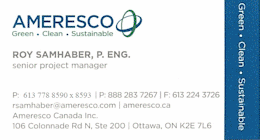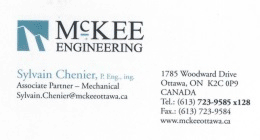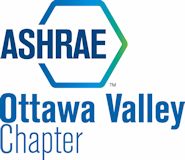

Spotlight on Subash Vohra
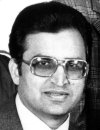
Spotlight on Subash Vohra
interviewed 2009.09.22
It was my great pleasure to interview Subash recently at building M-19 at the Montreal Road Campus of NRC. He is a fine example of what we should all strive to be in this life. BTW, that snap above dates from when Subash spent a year as a Governor for our chapter, way back in 1979-1980 - this was Mike Acton's presidential year - ed.
Subash Vohra was born in the Indian province of Punjab on October 5th, 1939. He obtained his first degree from Punjab University in 1958, with a Bachelor of Science. Choosing to continue his education, he wondered about a career in medicine or engineering, both of which were highly respected professions at the time. His grandfather was already an established engineer and he was encouraged to follow in his footsteps. There was great prestige involved with entering a high level engineering course and there was limited space – the 1958 year only allowed for 30 mechanical, 30 electrical, and 60 civil engineering positions. Subsequently after a further four years of study at the Thaper Institute of Technology, in Patiala, Subash completed his studies with a second Bachelor of Science in engineering in 1962.
At this time Subash's brother was working in Frankfurt, Germany at ATE (Alfred Teves Est., now part of Continental AG), a company that manufactured brake systems for cars, and air conditioning systems for commercial buildings. Through this contact, Subash landed a job and worked there for one year from July 1962 to July 1963. Soon after this his brother emigrated to Canada. Subash then moved on to another job at MAN AG (Maschinenfabrik Augsburg-Nürnberg), a German engineering and manufacturing company (trucks to printing presses). This company specialized in diesel engines and had three divisions based on size of engine. Subash worked for the Klein Motor division which manufactured small engines suitable for cars. He stayed with this firm for one year from July 1963 until July 1964.
Both Canadian National and Canadian Pacific were customers of MAN AG and while he was working there, Subash wrote letters to these companies enclosing his CV. He traveled to Montreal in July 1964 and was interviewed by both companies. Canadian National offered him a job in Moncton New Brunswick, while Canadian Pacific offered him a job in Montreal working on the design of a/c systems. His brother was living in Montreal and he was more interested in this position. While this was going on, his brother noticed an advert in the newspaper from a headhunter – describing a design position with G. Granek & Associates of Toronto, a design consultancy. They were the designers of a shopping center in Montreal, which was under construction. The main mechanical contractor was headed by Jack Lewin. Subash responded to the advert and Gerry Granek asked Jack to interview him at his Montreal office.
The normal salary for a young qualified engineer at that time was in the order of $800/month. However Subash did not feel comfortable asking for this high a salary because he knew he was green in the Canadian market, had never worked in Imperial units, and wanted a chance to prove himself. When Jack Lewin asked him what salary he was looking for, Subash responded $500/month, so Jack said fine, please come back to the office for 1pm to meet Gerry Granek who was traveling up to Montreal that day. During his time in Germany Subash attained a good knowledge of the German language, and Jack Lewin had German background so this was an advantage. Subash met Gerry and things went splendidly. This was July 21st 1964 and Gerry asked when he could start work, to which Subash suggested August 1st. Gerry was obviously keen because he questioned what Subash would do with that week or so, and it was soon arranged that Subash was whisked away to Toronto by air and put up in a hotel all courtesy of Gerry Granek. At their downtown offices, he met with Gerry's senior partner, who proceeded to ask Subash “what is the typical airflow required per square foot for an average office space?” - to which Subash answered in metric units... The partner was suitably impressed (or confused) and all went well.
The first project he worked on was the design of the main mechanical room for a racetrack near Lakeshore Blvd. in Toronto, under the tutelage of a senior engineer. Soon thereafter the firm won the design competition for the new National Arts Center in Ottawa, and Subash was sent to work on this project under the supervision of a senior engineer at the office of the architectural firm Affleck, Desbarats in Montreal. This project was plagued with many redesigns, and after six months Subash was looking for a change. It was nearly Christmas in 1964 and he moved to a supervisory position with Monarque, Morelli, Gaudette, Laporte, another Montreal firm providing mechanical, electrical and structural design services. Even though he had only just started he still received the $25 Christmas bonus. There were many new immigrants working in our field at that time and Subash's language skills made him the “official translator” for the office.
This was a very busy era for construction in Montreal and Subash soon learned that the design-build contractor S. Engle & Associates were looking for help. They were building the Place Bonaventure project and were doing real-time design on site. Subash was soon in the situation where he was working all day for Monarque Morelli and then moonlighting in the evenings on Place Bonaventure. This was a Canadian National Railways project and they were paying the contractor to produce accurate drawings of everything being installed. They wanted everything to be complete in time for the Expo '67 world fair, and Subash worked evenings and weekends for a flat rate of $5/hour (sounds like a decent wage for 1965).
Ever watchful of the newspaper adverts, he noticed one by the National Research Council for a position at their Montreal Road site, and sent in his résumé. Ab Maclaren was the NRC director of Plant Engineering Services (PES) at that time and he interviewed Subash at the Queen Elizabeth hotel in Montreal. Subash was asked general questions about his experience and was offered a job two weeks later with a $550/month salary. He talked over his options with some colleagues at Monarque Morelli and eventually accepted the position, starting in September 1966.
These were days when the slide rule was still the tool of choice, and his first project was a heating system for a small building at the NRC Uplands Campus, U-62. Things were different in those days – PES was a major employer with approximately 260 employees, comprising all M&E trades. When a design was done it was installed by PES staff and the designer was responsible for everything right down to bills of materials. (in fact I can state that I have learned what little I know about pneumatic control systems by studying some of Subash’s original drawings – ed). Subash continued in a design role and in 1974 was promoted to Supervisor of Mechanical Engineering Group.
In 1983 the director of PES retired and this heralded an era of major change in the organization – many people retired early with golden handshake packages. Subash was promoted to General Manager of Engineering Services in 1986 and the first thing he was asked to do was to make cuts and find cost savings. The NRC buildings in the Ottawa area had previously been split up into as many as seven “zones” and Subash found cost savings in reducing this to three. Zones 1 and 3 are both at the Montreal Road campus, and Zone 2 comprises the 100 Sussex Drive building (S-77) and the Uplands Campus.
The name PES was eventually changed to ASPM (Administrative Services and Property Management), and Subash became Director of Engineering & Maintenance in 1987. In 1997 the head of ASPM was seconded to the SIGMA project (NRC's adoption of the SAP system) and Subash then became Acting Director General of ASPM for two years. After the SIGMA work was complete, his predecessor decided to retire, so the DG position became vacant. Subash had to compete and won the competition – and he eventually retired from NRC in 2007 after another eight years as Director General.
During his time with NRC, Subash contributed greatly to the organization and these are just a few of his achievements:
- In 1989 he started the first Government of Canada backed Energy Performance Contracts for four NRC buildings, and saved $400K/year in running costs.
- NRC buildings at the Uplands campus had originally been heated via steam provided down tunnels by DND. He felt that the cost for this was too high and he worked with Honeywell to convert the buildings over to individual gas-fired steam boiler plants – this project was successful with a 2.5 year payback period.
- In 1993 the 4.0 megawatt NRC Co-gen system was brought on-line, saving millions of dollars per year. The payback period was 5.5 years with a 1 million dollar incentive from Hydro Ontario. Natural gas was inexpensive in the early 90's which made this project particularly attractive. Now the plant runs during peak periods when it is still cost-effective.
- Replacement of fume hoods in building M-12 with efficient low-flow units has reduced the outdoor air make-up requirement considerably, saving NRC $330K/annum.
Subash is currently very active in records management for ASPM – his forty year knowledge of projects for NRC Ottawa has proved invaluable in deciding what documents (such as drawings) are still valid for scanning (see the article “I.M. Knocks at Our Door, Drawing Ever Closer” in the April 2008 Communiqué). He has set his sights on the Sussex Drive building in the near future – it has hundreds of fume hoods gobbling energy – and he intends to put this right much like he did with building M-12.
He is currently vice-president of Co-Gen Canada, a non-profit organization offering courses, seminars and workshops. In 2007 he received a Lifetime Achievement award from the Real Property Institute of Canada (RPIC), has received awards from the Treasury Board, and in the past has received TEGA awards through ASHRAE. When asked what he thinks of his forty years with NRC, he is quick to state what a wonderful employer they are, where you can learn a great deal, and give the same back.
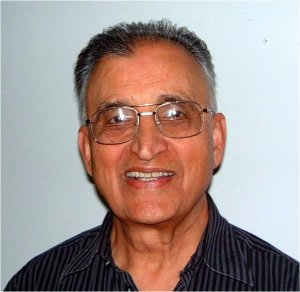
Subash Vohra, October 2009
This article was first published in the November 2009 issue of the Capital Communiqué.
